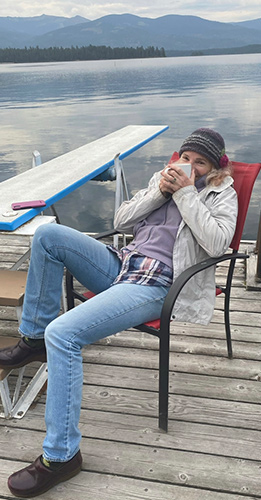This weekend I had the opportunity to participate in a suture lab at Whitman College, a small liberal arts school in Walla Walla, Washington. This lab is designed for Whitman students who are interested in medical careers. The lab consisted of about 30 students and 7 doctors. The participating docs included one general surgeon, one plastic surgeon (moi), two OB-Gyns, two ER docs and one family practice doc.
Now you may be asking what the big deal is in tying a knot and that is a great question. Proper knots are important in surgery because an improper knot can come untied and the thing the suture was holding together will fall apart. Not good. Other activities that require proper knots that come to mind are rock climbing and boating. Knots need to hold. Also in surgery, it’s important to tie a knot that holds with the least amount of suture material. Excess suture material can be irritating to living tissue and can also harbor bacteria so you always want to use the knot that is just enough to do the job.
The first part of the lab involved showing the students how to tie two-handed knots and one-handed knots with a length of nylon cord. I immediately discovered how hard it was to teach a skill that I do without even thinking about it! I don’t need my brain because knot tying for me is now in my “muscle memory”, not in my head. It’s the same for many physical skills that involve repetition such as dancing, sports or playing a musical instrument. And I found that the more I tried to explain it, the harder it was to do. Fortunately I finally discovered I just needed to shut up and show the students how to do it and they were able to copy my movements.
The next part of the lab was showing the students how to suture. For this we had a nice supply of pig’s feet. Pig skin is similar to human skin although thicker and tougher. Suture needles are different than a seamstress needle in that they are curved and require a instrument called a needle driver. The force required is very different than a simple push. It’s more of a stoke with a turn of the wrist. Again, I found explaining it very difficult because it all comes so automatically to me after all of these years. I was very impressed with the enthusiasm of the students and I think a number of them may very well make fine surgeons.
Another part of this visit included dining with the students in an informal lunch and dinner and answering their many, many questions about being a doctor. I found it bittersweet to compare my current position with theirs. I am nearing the end of my surgical career (I’m planning on 5 more years) and they are just at the beginning. They have so much uncertainty and so many challenges ahead. Most of that is now in my rear view mirror. I tried to give them some honest answers and not sugar coat the difficult pathway to becoming a doctor and in particular a surgeon. I really had a chance to reflect on all of those tough years of medical school and residency and the ongoing challenges of being in practice. I am envious of their youth but honestly would not want to trade places with any of them!
A real bonus for me was the information my 17 year-old daughter, who came with me, received from these bright college students. She is at the beginning of her college search and she got some great advice about choosing a college. And she got a nice tour of Whitman.
I am hoping I get invited back again to teach another batch pre-med students a few tricks of the trade. And who knows, one of those students may be my daughter!
Thanks for reading. Dr. Lisa Lynn Sowder
I would be honored if you followed my on Instagram @sowdermd and @breastimplantsanity.




 @lisalynnsowder
@lisalynnsowder
